Croatia Opens Borders for EU, Schengen Countries
June 30, 2020 - The news we've all been waiting for finally (at least partially) arrived today: the Croatian Civil Protection Headquarters officially decided that Croatia will open its borders fully for all EU and Schengen area passengers (EU/EEA citizens and permanent residents).
Update - Croatian Police Publish New Official Border Guidelines, Effective July 11, 2020
It's been months since things started changing on the Croatian borders (and elsewhere), but not one single day has been anticipated as this one has been during that whole period. The Croatian Civil Protection Headquarters have uploaded to their website their decision (this link opens a .pdf document) which states clearly that Croatian borders are still closed for all passengers, EXCEPT all EU-passport holders, as well as those whose countries belong to the Schengen area and associated countries. The decision clearly states that the exception for the EU/Schengen nationals includes the family members of those with the aforementioned passports.
It also states that the third-country citizens that have permanent residence in the EU, based on the EU Directive 2003/109/EZ from November 2003, as well as any other directive or national long-term visas are also exempt from the ban, i.e. are allowed to enter Croatia.
All those aforementioned people who want to enter Croatia are instructed to announce their intention of entering Croatia at https://entercroatia.mup.hr for epidemilogical reasons and faster border crossing. without any administration.
The decision also states that the third-country passengers with special status (such as medical workers, cross-border employees, transportation workers, and others) are also allowed into Croatia, but with possible conditions. The most interesting case mentioned in the exceptions is the fact that all third-country passengers can enter Croatia if they are here for tourism and any other business, but they can be subject to special epidemiological measures. By the end of the day, we will almost certainly know more about the scope of those measures.
The decision will take effect at midnight tonight, i.e. will be enforced as of July the 1st (it says in it that it is in place until July the 15th, and then another one will arrive - possibly just extending this one).
Additionally, the self-isolation measure for the citizens of 4 countries (Serbia, Bosnia and Herzegovina, Montenegro and Northern Macedonia), which has been introduced on June 24, has not been prolonged today, which means that the travelers from those countries can also enter Croatia without any restrictions, tests or self-isolation.
For the latest travel info, bookmark our main travel info article, which is updated daily.
Read the Croatian Travel Update in your language - now available in 24 languages
Source Claims Croatia Could Reopen Borders Incrementally in June
May 8, 2020 — Tourism Minister Gari Cappelli claimed yesterday requests from countries wanting Croatia to reopen its border this summer flooded his office. Their wish may come true.
A source consulting with the Civil Protection Directorate on reopening hospitality businesses said Croatia may start loosening border restrictions starting next month, adding the announcement may come as early as this afternoon.
Croatia could first reopen its border with Slovenia on June 1, followed by Czechia, Slovakia, Hungary, and Austria on June 15, the source said.
The reopenings would be subject to continued success in controlling the coronavirus, both within Croatia and the other countries.
Opening the borders would signal an unofficial end to the intense anti-pandemic measures Croatia put in place after its first confirmed affection arrived in late February. The country has already pulled back stay-at-home orders, and hospitality businesses will reopen next Monday.
It would also be one of the first countries to allow movement from other member states within the bloc. The European Union will apparently let members dictate border policy via bilateral agreements, rather than unified protocols.
The epidemiological measures and constraints weren’t clear, the source said, but would be presented in the announcement.
Border reopenings remain the last stage in Croatia’s transition to something resembling normalcy in the coronavirus era. The move signals the government’s hopes to salvage what’s left of the economically vital tourism season, which usually drives up to one-fifth of the nation’s GDP.
Cappelli said there were very few cancelations for July and August, suggesting the tourism season may bounce back better than expected
“Italians are still hoping to come to Croatia,” he said ahead of a government meeting in Zagreb yesterday. “Not to mention Slovenia, Austria, the Czech Republic.”
Croatia’s not alone in its desire to move past strict measures. Neighboring Slovenia is reportedly also seeking a way out of the current restrictions, hoping to rescue what’s been a complete loss on a summer tourist season.
The nation has also lobbied Croatia to cut back on travel restrictions for its citizens, many of whom own weekend homes along in Dalmatian. Opening the border for Slovenians would refill many empty houses on islands and along the coast, some of whom also offer accommodations during the summer.
Slovenia is also Croatia’s second-largest source of guests, accounting for 10 percent of overnight stays.
Italians remain off the radar in all discussions. The country’s coronavirus ordeal has statistically crested, and the government recently loosened some restrictions on daily life. But Croatia could be able to push back on opening the borders with Italy until August, when their tourists flood the coast.
Croatia Border Patrol Tracking Migrants With Portable Thermal Imaging
During the 2015 migrant crisis, Hungary and Slovenia built border barriers to thwart the influx of illegal migrants. Until recently, Croatia border guards have faced the daunting task of manually monitoring their unfenced 1,326 km border, which is also a non-Schengen EU border. However, with the help of advanced thermal imaging technology, Croatian border guards have finally gained an edge on stopping illegal migrant movement.
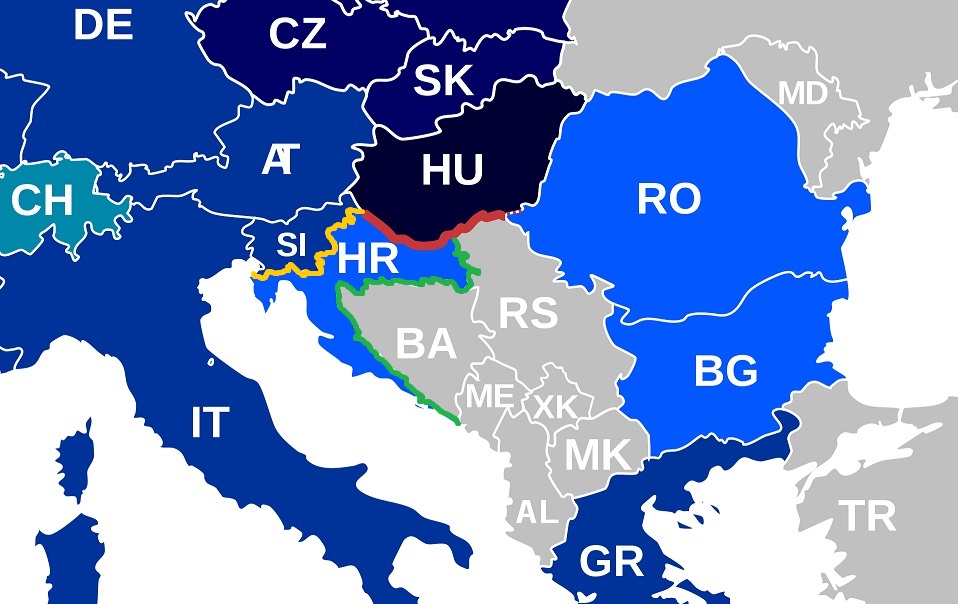
Hungary Border Fence (Red) | Slovenia Border Fence (Gold) | Croatia Border No Fence (Green) | Wikipedia
Unfenced Croatia EU Border 1,326 Kilometers Long
The Hungarian border barrier, which spans the borders of Serbia and Croatia, is 523 km long. The Slovenian border with Croatia spans 670 km. By contrast, Croatia shares a combined 1,326 km unfenced border with Bosnia and Serbia (1009 km with Bosnia, 317 km with Serbia). And migrants, many of whom are biding their time in nearby border camps, make repeated and daily attempts to enter Croatia from both countries, a practice which they call "The Game".
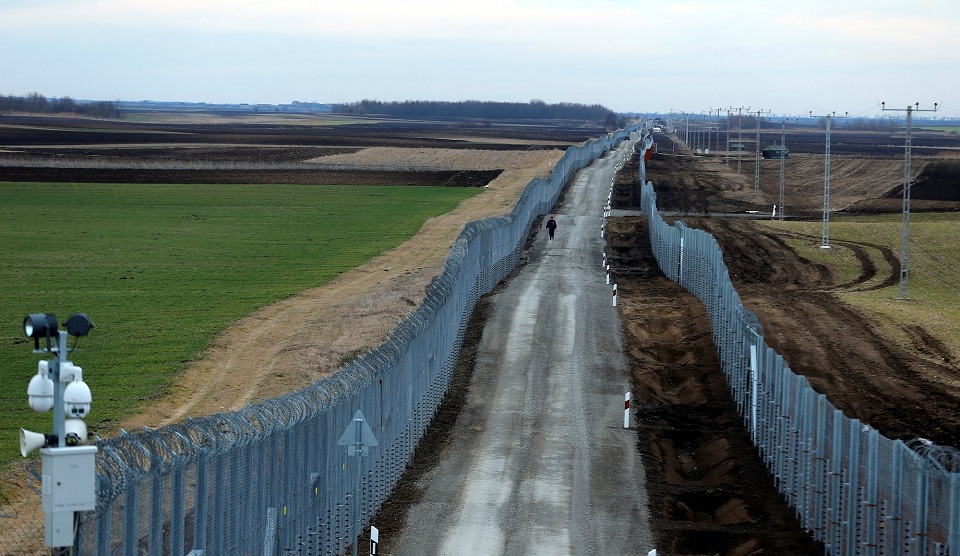
Hungary Border Fence | Wikimedia Commons
Electrified Hungarian Border Barrier Stopped Illegal Migration
Once completed in 2015, the Hungarian border barrier effectively halted migration into that country. It is equipped with parallel barbed-wire fences, floodlights, security cameras, and loudspeakers which blare warnings in English, Arabic and Farsi. The fences also deliver a mild electric shock upon contact, and have rendered any potential accusations of migrant pushbacks a moot point.
The Slovenian border barrier, while not as advanced, has also deterred attempts by migrants to enter Croatia’s Northwest neighbor. Both fences have effectively left many migrants, who are seeking entry into the Schengen zone, stranded in Croatia. While trapped in Croatia, they work with smugglers or attempt to continue their journey to Italy, Germany and France on their own.
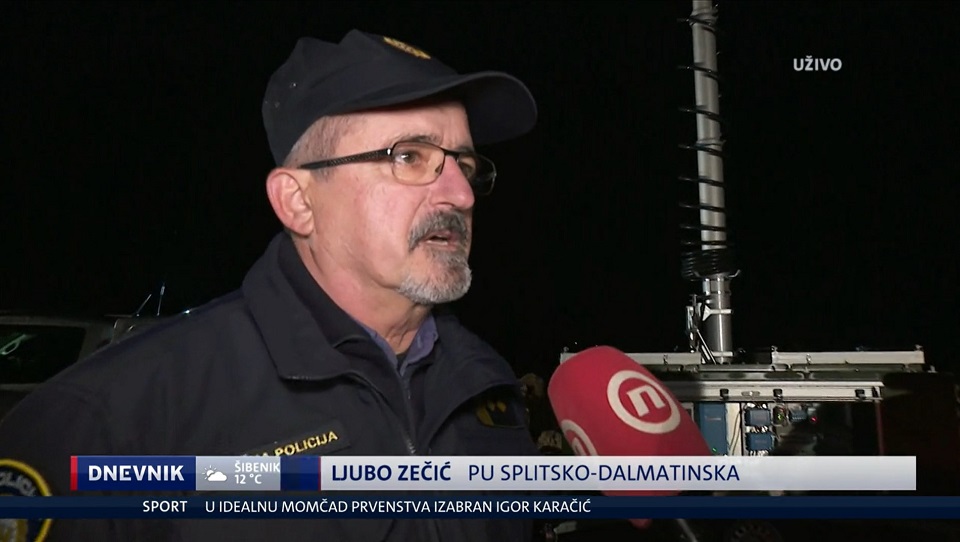
Croatia Begins Using Mobile Thermal Imaging Cameras
The Croatian border is now being protected by mobile thermal imaging cameras which can detect people illegally trying to enter Croatia from up to distance of several kilometers. The Nova TV/Dnevnik news team went to the border on January 26, 2020 and was the first to see how the 6 million EUR system works in practice.
Croatian police departments located on the illegal migrant route and roads leading to Croatia have been equipped with 17 Flir mobile camera systems.
Ljubo Zečić of the Splitsko Dalmatinska County Police Administration said that there are two devices are in their jurisdiction and indicated that it is very helpful that the system is mobile and can be easily transferred to positions which have been detected as frequent crossings.
Most Migrants Enter Croatia From Sarajevo and Mostar
"Most migrants coming from Bosnia are attempting to enter Splitsko Dalmatinska County from Sarajevo and Mostar. In 2019, our police department reported a 30 percent increase in illegal migrants and a 54 percent increase in smugglers," Zečić said.
Tomislav Poljak from the Trilj station demonstates the Flir thermal imaging device, which has already thwarted the plans of numerous migrants and smugglers to enter Croatia illegally.
"Our colleagues are walking about two and a half kilometers from us, and we can detect exactly what is happening at that distance with this device," explains Poljak.
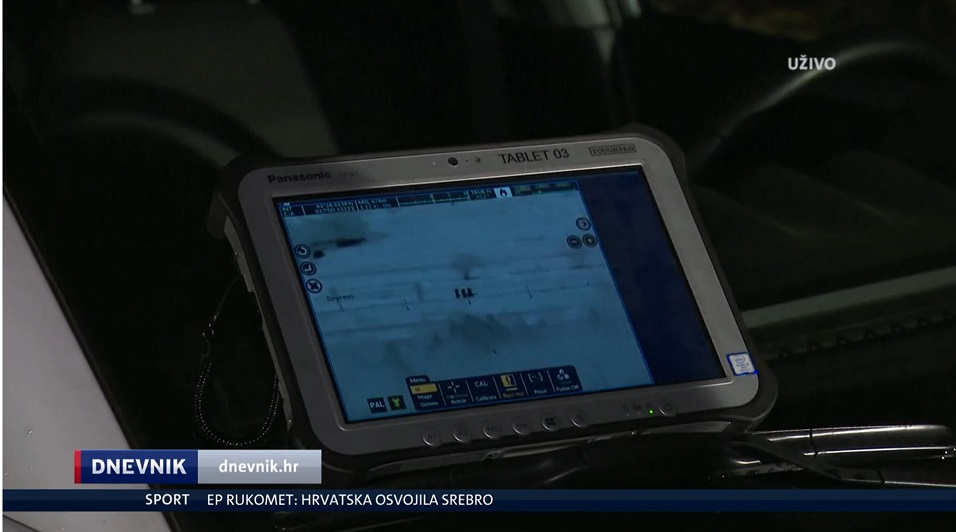
Migrant Cell Phones Permit Communication and Coordination
As soon as Tomislav's work shift began, he noticed some suspicious activity on the border. It was likely that someone was attempting to enter Croatia on a gravel road, which is often used by migrants going to Sinj. The nearest border control team was immediately dispatched to the field.
"A lot of migrants have very good cell phones and are quite well informed. And nowadays, they use temporary sim cards with these cell phones. They always have another trick up their sleeves,” Tomislav points out.
Cameras Detect Migrant Movement Across Bosnia Border
Almost a kilometer above sea level, the police officers found an abandoned truck which migrants often us to seek shelter from bad weather. Since there was no one in the truck, the Trilj border guards continued their search with manual thermal imaging devices.
"Without this technology, it would be much harder to do our job because you cannot see anything in the dark with human eyes," Zdenko explains.
The police action was soon abandoned because the suspect returned to Bosnia and Herzegovina.
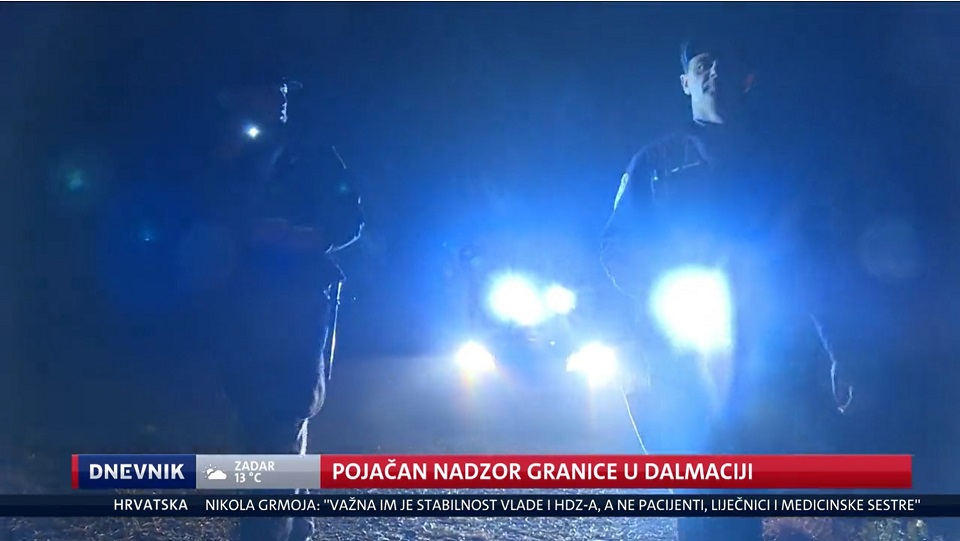
Cameras Can Be Moved Within 20 Minutes
The benefits of these devices are numerous. "If we need to move it to another location quickly, it takes us maybe 15-20 minutes to pack it up and drop it off," Tomislav says.
The cost of one Flir thermal imaging camera is almost 2.7 million HRK (362,789 EUR). If you approach it; the device automatically notifies police officers on the ground and issues a verbal warning. With the help of this technology, police believe that they will finally be able to stay a step ahead of smugglers and people trying to enter Croatia illegally.
Follow our Politics page to keep track of the migrant crisis in Croatia and efforts to control illegal border movement.
Croatia Border Town Shaken By Migrant Burglaries: Ilok Locals Live in Fear
While EU politicians, leaders, foreign journalists and human rights organizations play political football, assign blame and discuss solutions for the migrant crisis along the Balkan Route; frightened residents of Croatia border towns, like the town of Ilok, are locking themselves in their homes at night out of fear of burglaries and much worse.
“We are scared! In the middle of the night, we caught migrant burglars circling our house. I thought my son was going to work, but sensed something suspicious and saw two masked people at our front door,” reported one shaken Ilok local.
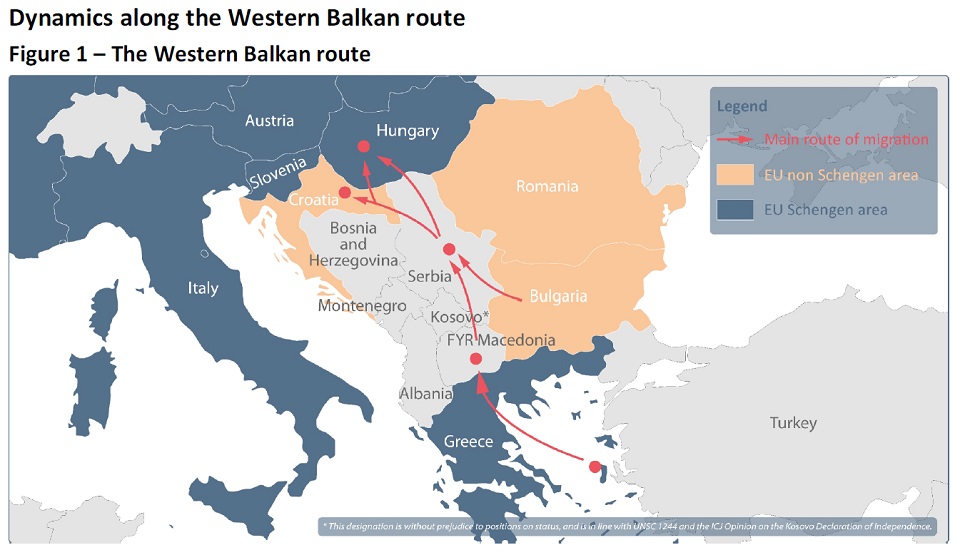
(Note that Hungary has built an electric fence spanning its border, which has halted migration.)
Croatia Police Not Publicly Reporting Ilok Migrant Burglaries
In the Fall of 2015, during the great migrant crisis, more than half a million migrants passed through Eastern Croatia on their way to more economically desirable Western European countries. Not a single major incident, or even any minor incidents, were reported during the entire relocation process. However, four years later, locals in some border towns in the same part of Eastern Croatia are living in fear, according to Branimir Bradarić/Večernji List on January 25, 2020. Migrants are entering their towns and villages and burglarizing shops, and a recent attempt was even made to break into a house. There have been also reports of car theft and one incident ended with a car accident in which several migrants were injured while trying to escape authorities in a stolen vehicle.
All this has happened over the last half year but there were signs of trouble even before then. However the police have avoided discussing these burglaries in their regular reports the media. Therefore, frightened residents have decided to go public with these incidents on their own. The situation has deteriorated most notably in the Eastern Croatia city of Ilok, where residents are no longer willing to remain silent about their fears for safety in their own homes.
Frightened Ilok Residents Reporting Migrant Burglaries Directly to Media
The last in a series of frightening events occurred ten days ago when two migrants, dressed in dark hooded jackets, tried to break into the home of the Lončar family in Ilok. Remembering that day, Irjana Lončar recalls hearing noises around 4:30am.
“We were sleeping when I heard noises in the yard and by the door. It sounded like someone was walking nearby and I thought it was my son leaving for work. But the lights were off, which was strange, so I got up to see what was happening. At that moment, I saw two unfamiliar masked people at our front door. They were trying to force our door open by destroying the lock with a device, which I think was a drill. I started screaming and yelled for my husband, but the two burglars had escaped by then,” recalls Lončar, who was still trembling with fear.
Since the lock was destroyed, her husband could not get the front door open immediately. After succeeding, he jumped into their car and tried to follow the migrant burglars. Irjana watched from the window as the pair fled down the road. Later, she discovered that the burglars had also been trespassing in their yard and had broken into their attic, where they stole two knives and a knife sharpener. They swiped the Lončar’s New Year's light decorations and made off with her husband's hunting backpack. Then she discovered that the pair had tried to open the kitchen window with a sharp object to enter the house from there. Police responded to her call for help very quickly, but by that time the migrants had long vanished into the darkness.

Ilok Residents Concerned for Safety and Property
“I'm really scared now. From that day, my life has not been the same. I have a difficult time sleeping and am always on the alert for unusual noises. Every little noise will jolt me wide awake as does the sound of barking dogs. I'm afraid that they'll try to break into my house again. And, I'm particularly scared because nobody knows what these people are prepared to do. Nor does anyone know what they would have done if they had entered our house, or how it all could have ended. We just want to feel safe in our town again, and especially safe in our own home. Unfortunately, that's not the case anymore,” Lončar admits.
She adds that, after their burglary, they started hearing about several similar break-ins throughout town – and other locals have witnessed migrants breaking into homes. She claims that there are currently several unoccupied houses in Ilok, and migrants are breaking into them so they can hide temporarily before continuing their journey further into the interior of Croatia and the rest of Europe.
The Ilok locals have also reported finding discarded clothing all over town as migrants change their clothes before continuing their journey westward. There have also been reports of migrants crossing the border and continuing down the road before they are caught by police.
Ilok Break Ins and Burglaries Widespread
Jadranka Tomašić’s shop has also been hit by migrants. They have succeeded in burglarizing her shop in two out of three attempts. In both of those cases, according to Tomašić, they stole certain brands of cigarettes, some alcohol and Nescafé. About 20,000 HRK (2687 EUR) of merchandise has been stolen from her shop, and the front door of her store was damaged too. They also ran off with all the cash they found.
“I do not feel safe here anymore, and I am not the only one. Other Ilok residents don’t feel safe in their town either. In addition to everything else, you can see the effects of fear in front of elementary schools at the end of the school day. Parents are now coming to school in cars to pick up their children. People are locking themselves in their homes before dark and are avoiding going out in the evening. No matter how you look at it, the situation is not at all simple or straightforward,” Tomašić reveals with concern.
She adds that in addition to the burglaries in her shop, there have been burglaries in the suburban settlements of Bapska and Šarengrad. After the burglary in Šarengrad, the perpetrators were apprehended. After one of the burglaries at her store, a large knife was found, which was to be believed to have belonged to migrants. She also recalls a situation that occurred last summer when a migrant tent was found in a corn field across the street from her store, during the corn harvest. It was in a populated part of Ilok and nobody aware of that it was there until the harvest.
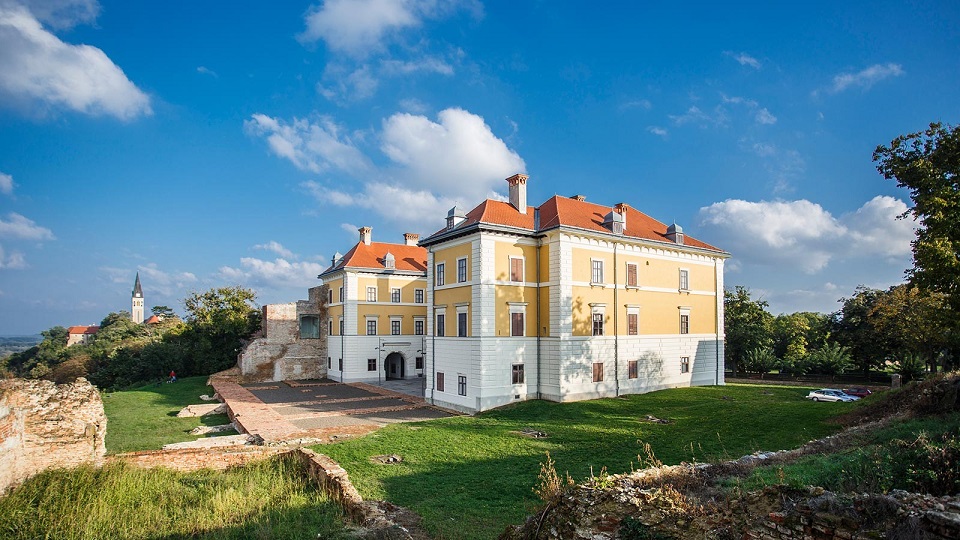
‘We just want to live and work normally’
“We just want to live and work normally, but that's not the case now. The worst part is that feeling of insecurity. These people have shown no fear, and that is why we are very afraid. It really bothers me that nobody is talking about this. I have no objection to the job the police are doing and do not expect that they, or the mayor, will be able do something overnight. They cannot do anything because they do not have the necessary tools, but this problem must be addressed in a systematic way,” Tomašić points out. She adds that many locals have been reporting burglaries, including those who have had their safes broken into and contents stolen.
The well-known Ilok agronomist and winemaker Ivan Buhač was also hit by migrants, but he managed to avoid burglary. He left his unlocked vehicle parked outside his house. Someone entered it and wanted to start it up and drive off. As the keys were not inside; they emptied the vehicle in search for the keys. However, the car itself was undamaged.
“The fact is that these incidents, which are extremely unusual for Ilok, happen regularly now and so it's not surprising that people do not to feel safe. Recently, burglaries and attempted burglaries have been reported in people’s homes. We all hope that this will all end soon and that we can go back to living normally, because this is not definitely the case now,” Buhač admits.
Commenting on recent events, Ilok Mayor Marina Budimir says the city authorities are aware of the problem and are in constant contact with the Croatia Interior Ministry and police in Ilok.
Ilok Police and Mayor: No Reason to Panic
“Everyone is working as hard as they can to resolve this problem, but I don't think there is any reason to panic. The problem is very present, and it’s important to compare how our residents live now as opposed to before: how they move about in town and go to work and school. Unfortunately, this problem in Ilok will continue since we are right on migrant route through Croatia from Serbia and beyond. Another problem is that the migrant camp in Serbia is located near the border crossing. Migrants are housed there, but they can leave the camp freely. That's why this is happening,” says the frustrated mayor.
She is also quick to point out that she has demanded increased police surveillance of the border and adds that there haven’t been any reported attacks on residents so far. The mayor also indicates that movement over the eastern border will be harder to detect as vegetation begins to grow again, which will make monitoring more difficult. Nevertheless, police have surveillance equipment in place. Indeed, police patrols are more visible in Ilok and the surrounding area. Unofficial reports from the police indicate that the border has been steadily monitored for months, and that the burglaries and break-ins in Ilok are indeed a problem, but they do not consider this problem dangerous because there haven't been any reports of violence or threats.
Croatia Police Point Out Two Types of Migrants
They also explain that the two types of migrants should be distinguished. There are passers-by who are trying to somehow cross the border illegally and move on. The others, who are thought to be causing the problems in Ilok, are located along the border crossing at the camp in Principovac, which they consider to be the main issue. They can move freely in that camp, and illegally cross the Croatian border to steal from locals so that they can raise money for travel to the West.
The stolen goods are then resold at the migrant camp, which was confirmed by the recent case of two migrants who were arrested after breaking into a shop in Šarengrad. After that, police claim, the burglary indicents stopped. Officers understand the Ilok residents’ sense of insecurity but say that there is absolutely no reason to panic and that the police are on the ground doing their job.
Follow our Politics page for updates on the migrant crisis in Croatia.
New Rules Coming to Croatian Borders for Non-EU Nationals
Instead of stamping passports, info on entry and exit from the EU will be more strictly monitored.
Croatia Enters Schengen Information System
One step closer to entry into the Schengen Area.
Croatia to Discontinue Joint Border Controls with Slovenia
After several years, joint border controls at the Bregana border crossing will be temporarily suspended.
Passengers Complain about Long Border Check Queues at Zagreb Airport
Land border crossings are not the only place where waiting times are long.
Slovenia to Introduce New Border Control Measures
All trucks will be sent to just a few major border crossings.


